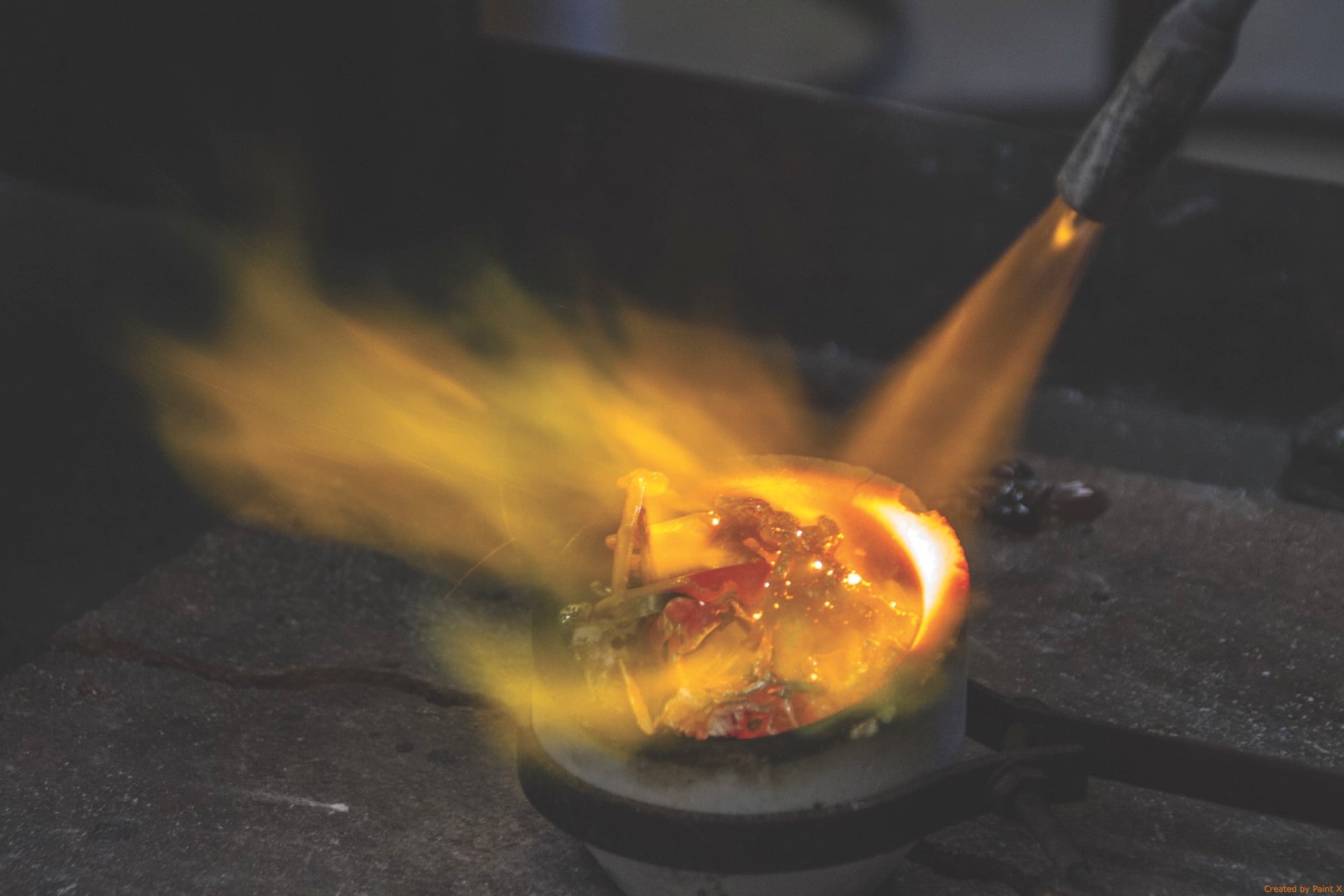4 Tips to Boost Refining Returns
3 Minute Read
This article highlights some 4 tips to boost refining returns that will prove dollar wise and useful for you.
You've done your homework and found a reputable refiner whom you trust to process your scrap. You have solid housekeeping practices in place to collect and segregate that scrap—from proper dust collection at the polishing bench to floor mats that trap shavings on the bottom of your employees' shoes. Overall, you feel confident that you are making a good effort to maximize metal recovery.
But there's always more you can do to improve your refining returns. The following are four tips from refiners that could give your return a boost.
Don't Over-Segregate
The refiner's mantra is, segregate, segregate, segregate. But did you know that when it comes to gold, segregating by karat might be overkill?
"Customers tend to send in their gold lots separated into karats," says Rafael Amador of United Precious Metal Refining in Alden, New York. "While this is a good practice for ensuring the accuracy of your testing methods, it takes a large lot and creates smaller lots. At most refineries, smaller lots equal larger fees. By dividing the lot into karats, customers set themselves up for additional charges."
Amador advises keeping all gold scrap together, assuming you can determine the approximate value of the lot using your in-house sampling methods. "You should get the same results by mixing the different karats in the melt—and save on any extra processing charges," he says.
The less metal, the better for stone removal
Some refiners offer stone-removal services, in which they chemically separate the metal from the stones without damaging them. Often, the fee for these services is based on the net weight of the lot received. So if you want to save yourself some money, cut out every bit of extra metal you can from the lot.
"Cut off ring shanks and send only the mountings or pieces with diamonds," suggests Amador. "On a bracelet with stones, remove the clasps. If it is connected to a stone-set nameplate, try cutting off the nameplate and sending the pieces with no stones with your regular scrap gold. While the weight difference may seem minimal, the savings in the long run is substantial."
Don't be shy to ask for advice
A reputable refiner who wants to form a long-lasting relationship with you is there to help—and that could even mean visiting your shop to see if you are doing everything you can to collect precious metal scrap and dust. "By doing a thorough tour with fresh eyes, we can investigate the little shop quirks that matter to metal control," says Daniel Ballard of Precious Metals West/Fine Gold in Ontario, California. "For example, we might spot areas where ducts need help to properly capture dust, or advocate wet grinding for metal control safety and efficiency."
Ballard adds that he will teach clients hands-on how to properly make a bar from filings and clean scrap, and subsequently drill a sample for independent assay. "This is important to keeping open communication with our customers, and gives them a way to verify results—it's a relationship based on trust."
When buying metal from the public, test whenever possible
With so many retail manufacturers and custom jewelers engaged in buying gold from the public, refiners today more than ever are dealing with scrapped "gold" jewelry that isn't karat gold—especially chain. If you are engaged in gold buying, you need a testing method that you can trust to avoid being duped at the counter. Stebgo Metals in St. Paul, Minnesota, shares the following suggestions with its customers:
- Start with a magnet test. Magnets attract ferrous metals, such as gold-plated and nickel-based chain and non-precious white metals—a good first line of defense in separating the real from the fake. (Note that magnets can also attract items of value, including gold lobster claws with steel spring rings, platinum cobalt alloys, and gold-filled items.
- Check for hallmarks and stamps. If you see one, trust but verify.
- Test the metal. If you have any questionable materials, you can perform a number of tests to verify precious metal content. A simple nitric acid test can do the trick (for specifics, visit the blog at stebgo.com). You can also use a handheld gold tester or x-ray fluorescence analyzer, many of which are now available from jewelry suppliers.
The award-winning Journal is published monthly by MJSA, the trade association for professional jewelry makers, designers, and related suppliers. It offers design ideas, fabrication and production techniques, bench tips, business and marketing insights, and trend and technology updates—the information crucial for business success. “More than other publications, MJSA Journal is oriented toward people like me: those trying to earn a living by designing and making jewelry,” says Jim Binnion of James Binnion Metal Arts.
Click here to read our latest articles
Click here to get a FREE four-month trial subscription.
You assume all responsibility and risk for the use of the safety resources available on or through this web page. The International Gem Society LLC does not assume any liability for the materials, information and opinions provided on, or available through, this web page. No advice or information provided by this website shall create any warranty. Reliance on such advice, information or the content of this web page is solely at your own risk, including without limitation any safety guidelines, resources or precautions, or any other information related to safety that may be available on or through this web page. The International Gem Society LLC disclaims any liability for injury, death or damages resulting from the use thereof.
The All-In-One Jewelry Making Solution At Your Fingertips
When you join the Ganoksin community, you get the tools you need to take your work to the next level.
Trusted Jewelry Making Information & Techniques
Sign up to receive the latest articles, techniques, and inspirations with our free newsletter.
